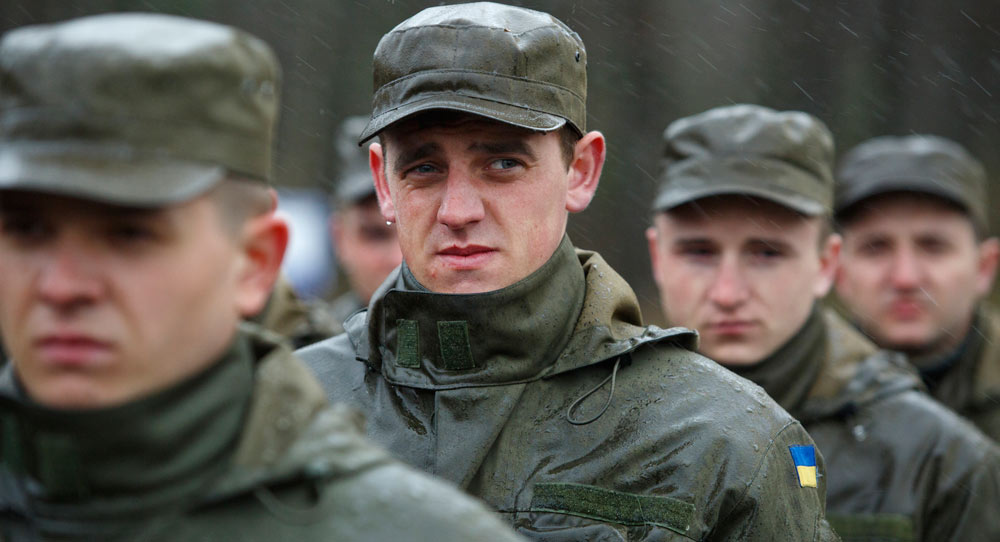To many who assumed that the Russian-Ukrainian conflict would calm down in 2018, the end of 2017 foretold quite the opposite. The conflict is back in motion, yet with some contradictory signals. On the plus side, the biggest swap of prisoners was held between Ukraine and the Russian-backed militants since the beginning of the war. This demonstrated that some progress on humanitarian issues is possible with the help of the Normandy format and the Trilateral Contact Group.
On the minus side, Russia withdrew its military personnel from the Joint Center for Control and Coordination (JCCC), a Russian-Ukrainian military body that helped to monitor the ceasefire and facilitated the withdrawal of heavy weapons. Not only did the JCCC provide a direct military channel of communication between Ukraine and Russia, it also reduced security risks for OSCE monitors. Immediately after Russia’s withdrawal, some of the worst fighting since February 2017 took place in eastern Ukraine.
Against this backdrop, Russian President Vladimir Putin again raised his proposal for a UN peacekeeping force, which he first tabled as a draft UN Security Council resolution in September 2017. Putin claimed at his end-of-year press conference that he is in principle not against a broader mandate for international peacekeepers in Donbas, but that a decision should be negotiated between Kyiv and the militants, which is—for good reasons—not acceptable to Ukraine and the West.
Nevertheless, Western allies redoubled their diplomatic efforts to find a workable solution for a UN mission with several parallel tracks of negotiations, including a direct U.S.-Russia channel between Kurt Volker, U.S. special representative for Ukraine negotiations, and his Russian counterpart, Vladislav Surkov. After a few months, there was little evidence of progress, which led the UN Secretariat to stall all preparations of an assessment mission to Ukraine. Despite that fact, German Foreign Minister Sigmar Gabriel called for a decision on a UN peacekeeping force to be taken before the Russian presidential election in March.
On paper, the Russian proposal seems to be a shift in posture. In reality, it is part of Russia’s strategy to backtrack from the political responsibility for the conflict and instead position Russia as a mediator within a new UN framework. Moscow proposed a limited, six-month mission, equipped with small arms, and with the exclusive mandate to ensure the security of the Special Monitoring Mission to Ukraine (SMM) along the line of contact. A mission under such parameters would likely freeze the conflict; it is also hard to imagine how it could support the implementation of the Minsk agreements.
Therefore, any Western proposal for a UN mission in Ukraine must embrace three key elements. First, its mandate must cover the whole territory of the Luhansk and Donetsk oblasts, including the Russian-Ukrainian border—a precondition the Russian president has already agreed to during a phone conversation with the German chancellor. This is essential to ensuring an end to further rearmament of the militants by Russia. In practical terms, a UN mission should be deployed at once—or, at maximum, over no more than two phases—to prevent Russia from obstructing further deployments.
Second, a UN mission should reinforce—not replace—the operations of the OSCE mission on the ground. The UN lacks practical expertise in the Russian-Ukrainian conflict and has been recently involved in peacekeeping operations mostly outside of Europe. UN peacekeepers should help the OSCE SMM to maintain peace, including by monitoring the withdrawal of heavy weapons and forces, guarding arms and ammunition depots, and protecting civilians. A joint OSCE-UN mission should hence be seriously considered. To effectively deliver on these tasks, such a mission should involve around 20,000 peacekeepers, excluding Russian forces.
Third, a UN mission should support the implementation of the Minsk agreements and facilitate the return of areas not controlled by Kyiv to Ukrainian authority, including creating conditions for credible local elections. The UN Security Council could grant the mission executive powers to help oversee the implementation of the Minsk agreements. The mission could also assist with the selection of local officials and police, as well as their training at later stages, and might also facilitate the safe return of displaced persons. In sum, it would engage the whole “UN family”— with its many affiliated programs, funds, and specialized agencies—in the post-conflict Donbas reconstruction.
How could Russia agree to such a UN mission? Most importantly, a coordinated policy of carrots and sticks by the U.S. and European partners is needed. The U.S. administration’s approval of the largest sale of weapons to Ukraine since 2014 has boosted Ukrainian defensive capabilities. Politically, it could have been used as a stick towards Russia, if it had been coordinated with European allies. Instead, it has created additional rifts with Germany and France. On the other hand, the West has a serious incentive on hand: sanctions. A proper UN mission, with a robust mandate, can help fully implement the Minsk agreements—a precondition to lift Donbas-related sanctions.
The proposal for a UN mission to Ukraine is a small window of opportunity for diplomacy. Yet it is not a silver-bullet to solving the conflict. Political will on both sides remains a prerequisite for keeping peace.
Dominik P. Jankowski is a security policy expert, diplomat, think tanker, and social media aficionado.
Liana Fix is the program director of the Körber Foundation’s International Affairs Department.
The views and opinions expressed here are the authors’ and do not necessarily reflect the official positions of the institutions they represent





.jpg)
.jpg)

